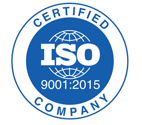
Are you creating a culture that fosters success?
This is a critical question that senior management personnel in Quality Compliance are asking themselves on a regular basis. Establishing a culture of quality is certainly not easy; it requires constant reinforcement, clear and effective communication, and buy-in from all levels of an organization. Failure to build and maintain such a culture can have devastating consequences and significantly harm your bottom line.
Here are 5 simple steps to kick start your journey toward creating a positive work environment for your organization.
1. Get to Know Your Quality Culture
Do you really know your culture? It sounds like such a simple question. Think about it and write down your thoughts. Can you clearly define your culture? Where does it fall in terms of the quality spectrum? Your answers here will provide some clarity into your culture from your own vantage point.
From there, gathering additional input is vital. Survey your team members, as well as outside consultants (a formal anonymous survey process is very effective), to learn how they view the culture in terms of quality. What’s working and what needs to improve? What keeps your team awake at night? You may be surprised by what you read!
2. Lead by Example
Building and maintaining a high quality culture starts with the tone from the top of your organization. If exhibiting quality in everything you do is important to the executives, then that sentiment will permeate throughout the entire company, ultimately becoming second-nature to the entire team.
Regular town hall meetings and individual department meetings to reinforce your company’s values and commitment to quality can ensure that leadership is visibly acting on your quality values. The prioritization of quality should be emphasized in company and department mission statements, documented philosophies, and overall guidelines.
Moreover, employees need to be appropriately incentivized to adhere to quality standards as part of their annual performance reviews and compensation determinations. Sometimes there’s nothing more effective than a bonus check to get your desired results!
3. Constantly Reevaluate and Improve
Conducting annual risk assessments, including 360-degree talent evaluations, can bring about very positive results. You should constantly challenge the status quo to further improve quality in your department. Make sure you understand your risks, prioritize and document those risks, and then actively communicate and discuss those risks with your teams.
To be clear, quality cannot end with a discussion. You must develop action plans and hold people accountable to mitigating and eliminating those risks.
4. Bring in an Outside Perspective
Many departments establish a culture of quality with their internal employees. However, many also fail to extend this culture to outsourced employees and consultants, losing out on fresh perspective and cohesive teamwork.
Supplementing internal employees with external resources is a valuable practice that many Quality departments employ in order to tap into specific expertise, assist with a project, or simply provide more arms and legs to get things done. To get the most out of such augmentations, and to benefit from this valuable insight, it is critical that these resources are fully integrated into your high quality culture.
Ask yourself: Are your outsourced team members getting the same communications regarding the importance of quality that your internal team members receives? Are they sitting in on your town hall and team meetings where the quality culture is being reinforced? Are specific policies and procedures adequately documented and communicated with the external team? On the flip side, are you listening to their input? They bring a different perspective to the table. They can share their experiences they have had with other companies and discuss the best practices they have seen. What perhaps didn’t work so well?
Pro Tip: Take initiative when soliciting feedback from your external resources. Remember, these are employees who may be hesitant to proactively share their thoughts due to a fear of “stepping on toes” or offending someone at the company. Sit them down and encourage them to give transparent feedback, both positive and negative.
5. Don’t Give Up!
Building a successful culture of quality that extends throughout your organization, including outsourced personnel, requires your full support and cannot be accomplished without total dedication.
If the Board of Directors and top executives are not doing their part, raise the issue. You have the expertise to know the importance of a top quality culture and the potential consequences of not having it -- they may not. Don’t hesitate to take the lead.
Interested in learning how PRP can help you create a positive work environment for your quality teams? Schedule a free consultation today by clicking HERE.





